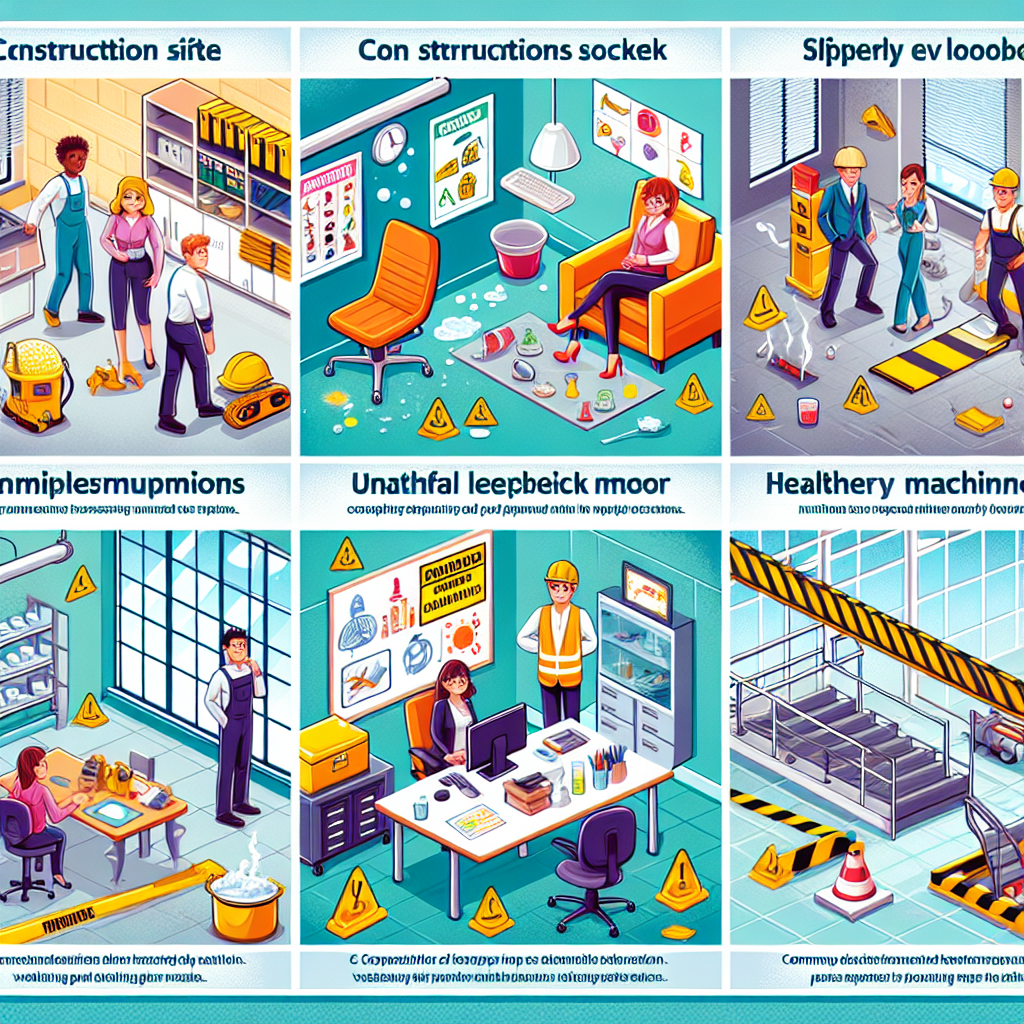In every job, employees face a range of hazards that can lead to accidents and injuries. Identifying and mitigating these risks is essential for maintaining a safe and productive workplace. In this article, we’ll explore common workplace hazards and provide practical tips on how to prevent them, ensuring that employees return home safe and sound every day.
Understanding Workplace Hazards
Workplace hazards can be broadly categorized into four main types: physical, chemical, biological, and ergonomic. Regardless of the type, it’s crucial for employers and employees alike to understand these hazards to foster a safe work environment.
Physical Hazards
Definition: Physical hazards are environmental factors that can cause harm without direct contact. Common examples include slips, trips, falls, and exposure to machinery.
Prevention Tips:
- Maintain a Clean Workspace: Regularly clean and organize work areas to eliminate clutter and reduce the risk of trips and falls.
- Proper Signage: Use clear warning signs in areas where there are potential hazards, like wet floors or low-clearance areas.
- Training and Awareness: Offer training sessions for employees on how to operate machinery safely and recognize potential physical hazards.
Chemical Hazards
Definition: Chemical hazards arise from the use or exposure to harmful substances such as solvents, acids, and other toxic materials.
Prevention Tips:
- Safety Data Sheets (SDS): Ensure that Safety Data Sheets are available and easily accessible for all chemicals used in the workplace.
- Personal Protective Equipment (PPE): Provide appropriate PPE, such as gloves, goggles, and masks, and enforce their use when handling hazardous substances.
- Ventilation Systems: Install proper ventilation systems to minimize airborne contamination and ensure a safe working environment.
Biological Hazards
Definition: Biological hazards involve exposure to harmful organisms such as bacteria, viruses, mold, and other pathogens.
Prevention Tips:
- Regular Cleaning: Implement a strict cleaning schedule to eliminate mold and bacterial growth in the workplace.
- Vaccination Programs: Encourage employees to participate in vaccination programs, especially during flu season, to prevent the spread of illnesses.
- Hygiene Awareness: Promote good hygiene practices, such as regular hand washing and sanitizing shared equipment, to reduce the risk of infection.
Ergonomic Hazards
Definition: Ergonomic hazards occur when the design of a workstation or job tasks puts strain on the body, potentially leading to musculoskeletal disorders (MSDs).
Prevention Tips:
- Ergonomic Assessments: Conduct regular ergonomic assessments of workstations to identify areas for improvement and adjust furniture and equipment accordingly.
- Employee Training: Provide training on proper lifting techniques and posture to reduce the risk of injury.
- Breaks and Stretching: Encourage employees to take regular breaks and incorporate stretching exercises into their daily routines to alleviate physical strain.
The Role of Employer and Employee
In promoting workplace safety, both employers and employees share important responsibilities. Employers must provide a safe working environment, offer training, and supply necessary safety equipment. Employees, on the other hand, should embrace a culture of safety by following guidelines and reporting hazards.
Open Communication Channels
Establishing an open line of communication about potential hazards fosters a proactive safety culture. Encouraging employees to voice their concerns and actively participate in safety discussions can lead to better hazard identification and mitigation.
Continuous Training and Education
Workplace safety is not a one-time effort; it requires ongoing education and training. Regular safety drills, workshops, and refreshers help keep safety protocols fresh in employees’ minds.
Conclusion: Prioritize Safety for a Healthier Workplace
Creating a safe workplace is essential for the well-being of employees and the overall success of the organization. By understanding common workplace hazards and implementing effective prevention strategies, businesses can minimize risks and ensure a healthier, more productive environment. Remember, safety is a continuous journey, and every step you take towards a safer workplace reflects a commitment to the health and well-being of everyone involved.
Choose safety today to secure a better tomorrow!


